
MyFAK (My First Aid Kit) from My Medic – Full Review with Comparison to DIY First Aid Kit
I recently wrote about the importance of being prepared for off-road emergencies, and how I put together my own, DIY emergency/first aid kit. Getting all the components of that kit took a fair amount of thought, time, and expense.
Thanks to the folks at MyMedic.com, if you’re looking for a quick and easy purchase of a complete first aid kit, you don’t have to look any further than their MyFAK (My First Aid Kit).
This first aid kit is available in five colors my – red, green, orange, black, coyote (tan). There are two “levels” of the MyFAK – Basic and Advanced.
Both are very comprehensive, with the advanced model containing items for treating more traumatic injuries.
In this article, I’m writing about the more robust version, the MyFAK Advanced.
Where to buy?
- MyMedic.com: Check Price
- Amazon.com: Check Price
- Alternative Kit (Surviveware): Check Price
Construction & Size
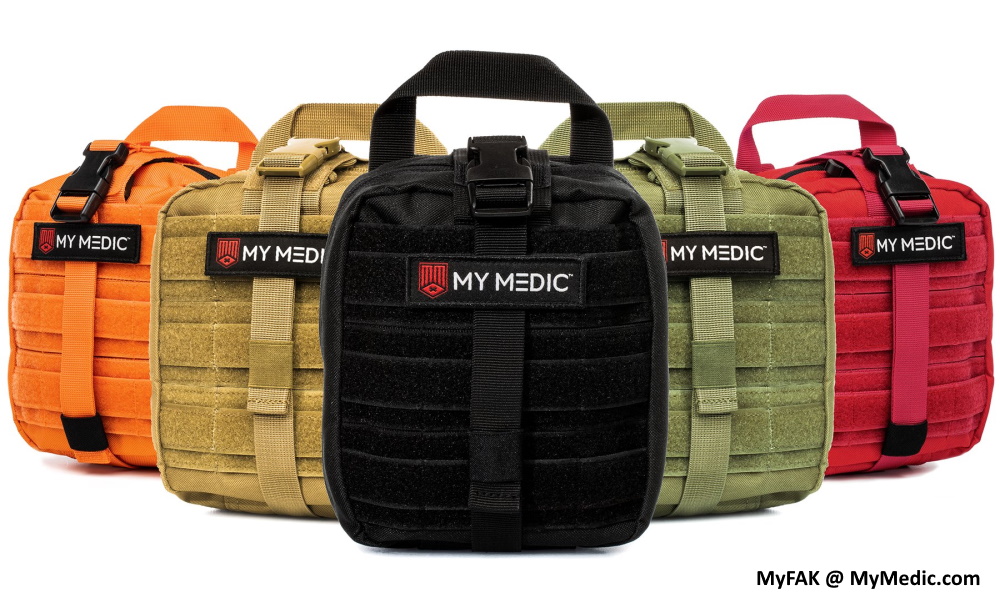
MyFAK is made of tough and weather-resistant 600 Denier ballistic nylon. The kit is approximately six inches wide, eight inches tall, and five inches thick.
The main part of the kit (the MOLLE pouch) is zippered, with two high-quality zipper pulls that allow it to be opened three-quarters of the way.
The interior of the MyFAK kit has eleven, sewn-in elastic bands that are used to secure the contents, as well as multiple internal compartments that house the included supplies (many in heavy, zippered plastic bags – much higher quality than your average Ziplocs), with room for adding more items if desired.
The kit also contains a zippered mesh compartment, which is attached to the main body by a Velcro fastener, which allows it to be detached.
This is a nice feature, and could be used to temporarily remove part of the kit, as sort of a mini-kit (i.e., medications, topical, and small bandages).

A nylon handle at the top of the bag makes for easy carrying, as well as separating the kit from the large Velcro tear-away panel. More on that later…
The front of the MyFAK has interlaced straps, with Velcro sewn on each (loop side). These allow for the attachment of additional items like small pouches or patches, and anything else that can be strapped, clipped, or Velcroed on.
It also includes a MyMedic branded patch, which holds down the tag end of the strap and quick release buckle that provides an extra level of attachment between the pack and tear away panel.
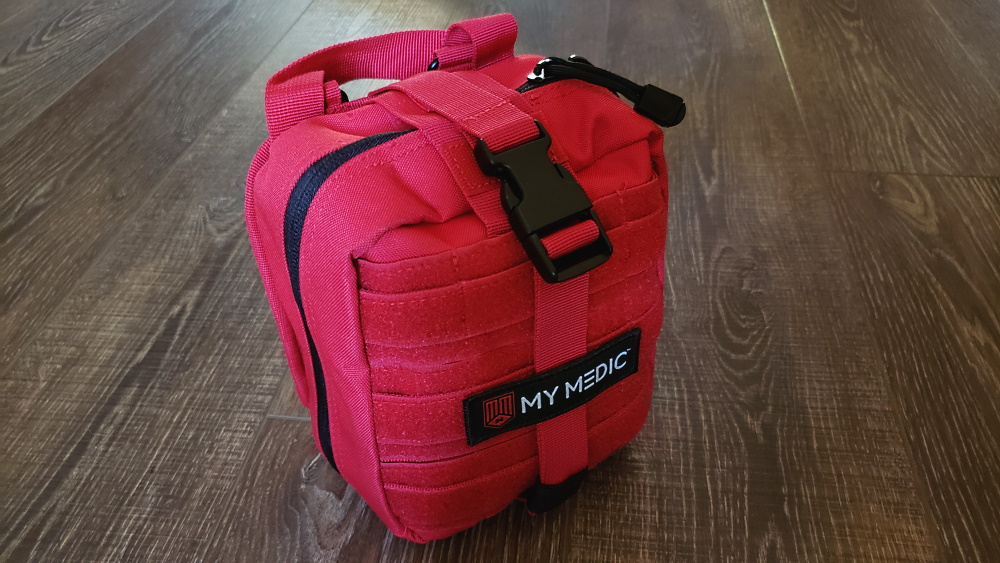
The back of the MyFAK is completely covered Velco (hook side), while the front of the tear-away panel is covered with loop side Velcro. When both pieces are stuck together, it takes a good amount of force to separate them, and this is a good thing!
The back of the tear-away panel has a couple of straps stitched horizontally across it, which could be used for running other straps through, in a perpendicular direction.
Two more, heavy duty straps are attached vertically, and fasten to the bottom of the panel with stiff button closures.
These straps work well with MOLLE storage panels, like Rago Fabrication Modular Storage Panels.
MyFak Medical Supply Contents
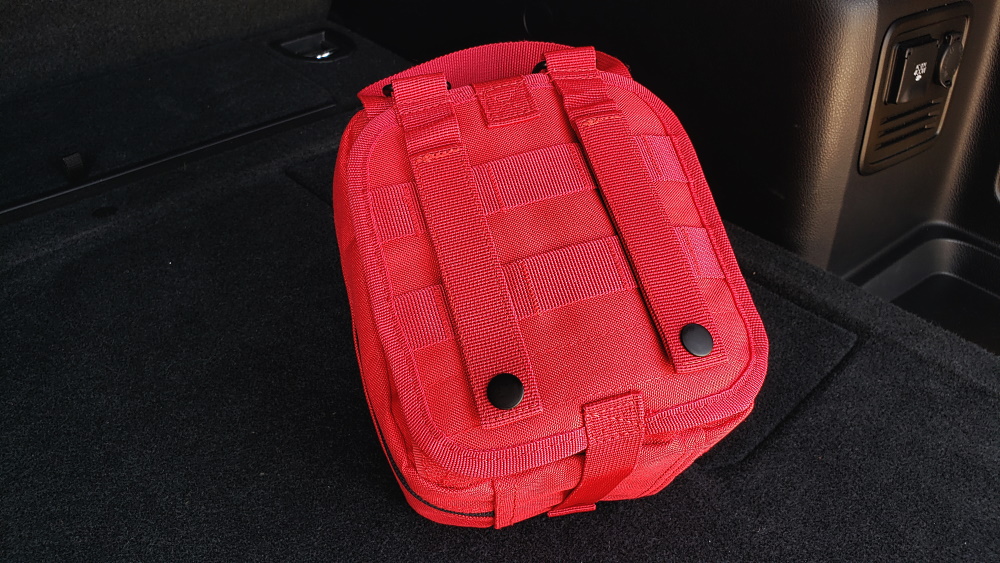
The Advanced version of the MyFAK is chock full of first aid and emergency items.
The photos below depict some of the items which differentiate the Advanced MyFAK from the Basic MyFAK.
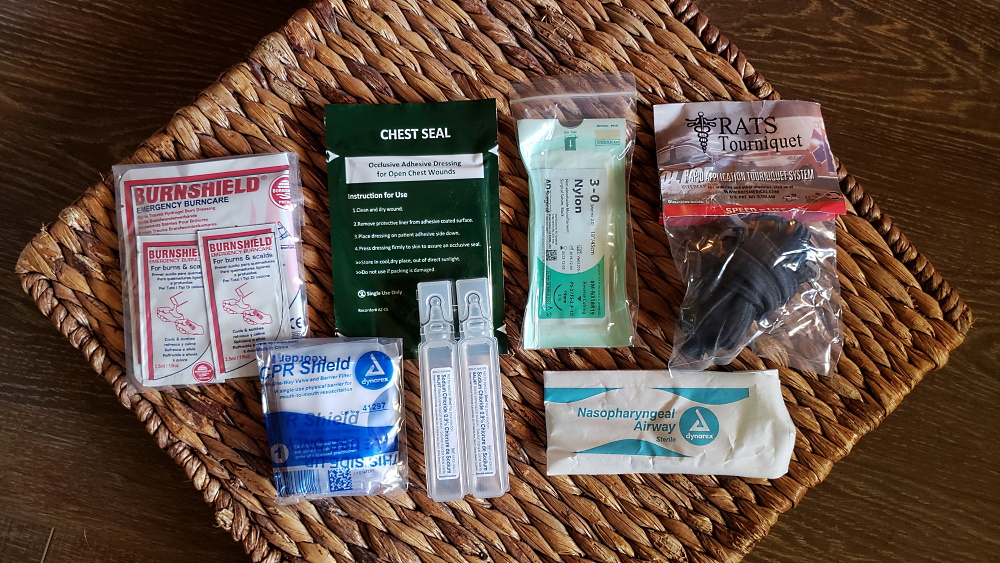

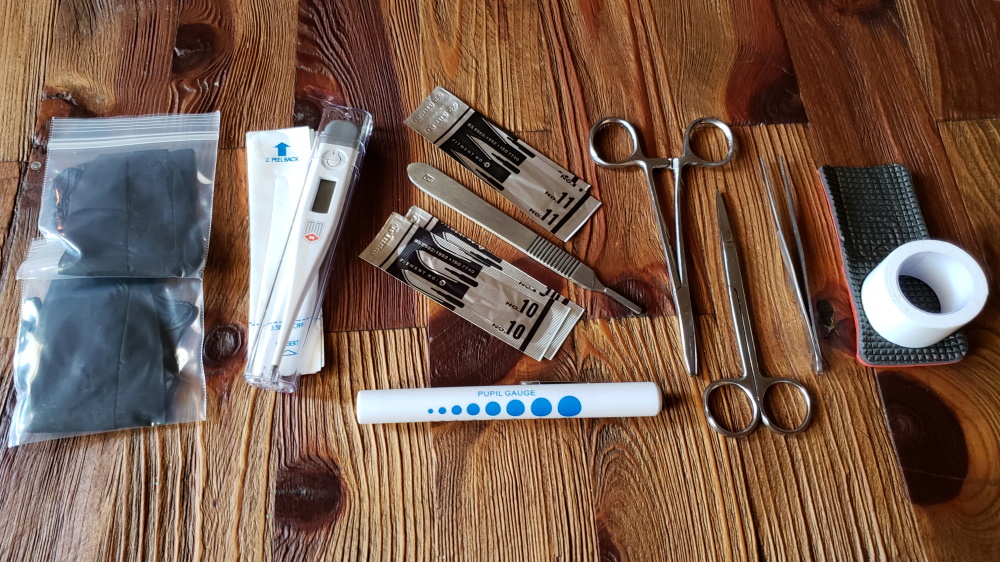
In addition to the very comprehensive items included with the Basic version of the MyFAK (see the What’s Inside Guide for items and quantities), here’s a list of all the items that are specific to the Advanced MyFAK.
Advanced MyFak Kit
- AIRWAY: Chest Seal, CPR Shield, and Nasal Airway (NPA)
- BLEEDING: Tourniquet, QuikClot | 3in. x 4ft, Emergency Bandage, and Non-Stick Gauze | 3in. x 4in.
- HYDRATION: Fizz Electrolyte Tabs
- MEDICATION: Ammonia Inhalant, Dramamine, and Aspirin
- OUTDOOR: Rescue Blanket, 550 Paracord, and Light Stick
- SPECIALTY: Nylon Suture | 3-0, Nylon Suture | 5-0, Suture Needle Puller, Scalpel Blade | No. 10,
- Scalpel Blade | No. 11, Scalpel Handle | No. 3, and Stainless Steel Surgical Scissors
- TOPICAL: Povidone Antiseptic
Medications, Bandages, and Topical
Here are the medications, bandages, and topical items included with the Advanced MyFAK:
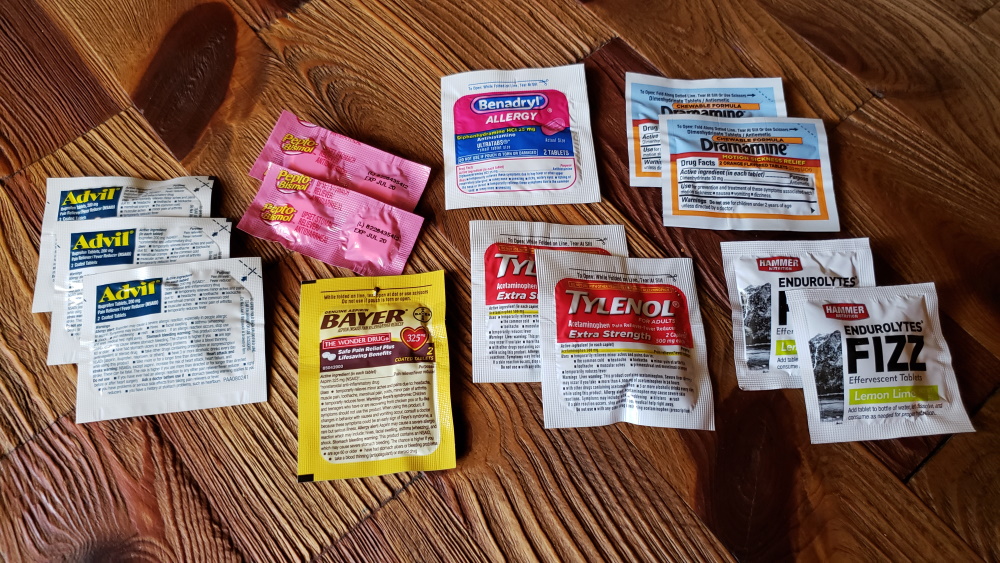
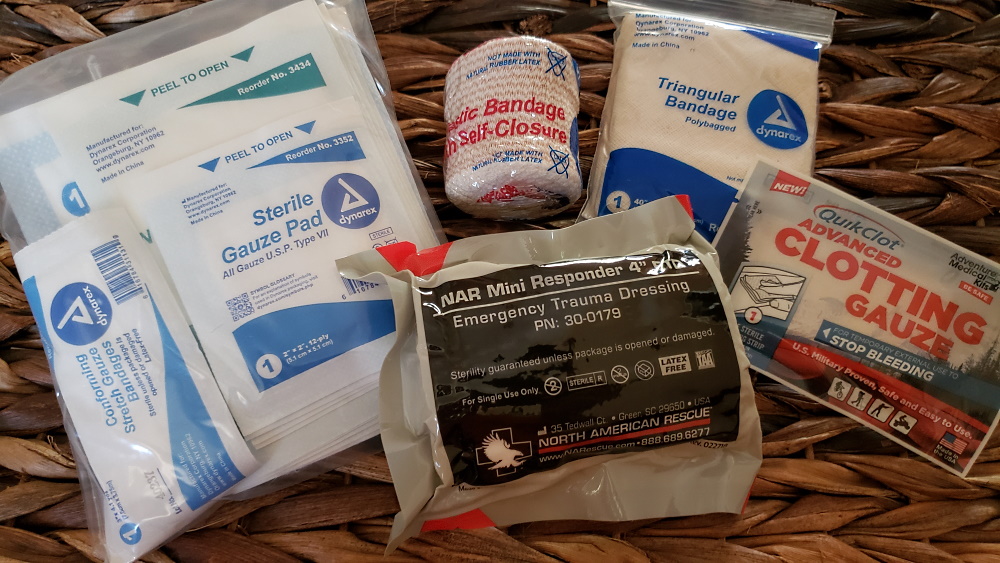
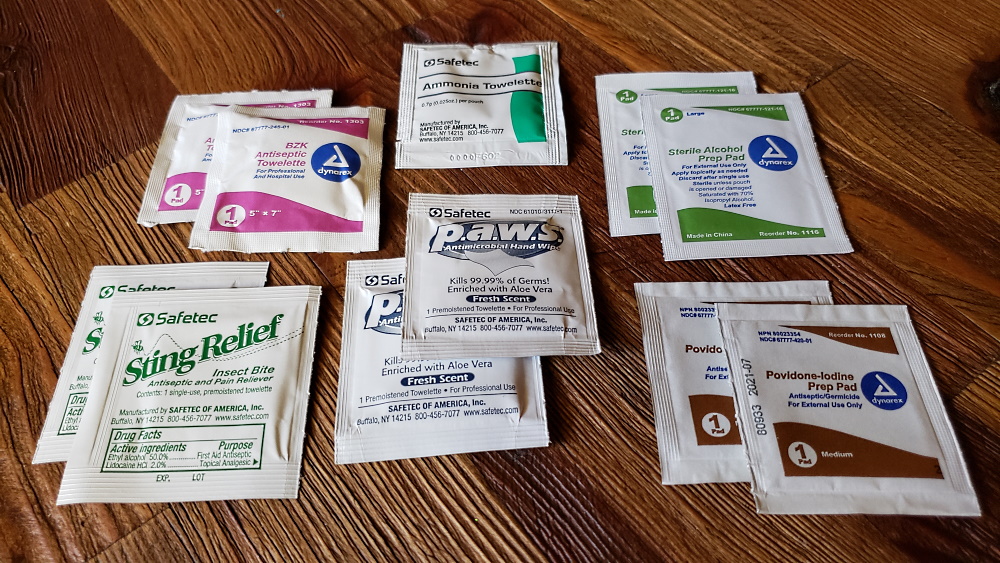
Mounting / Storage
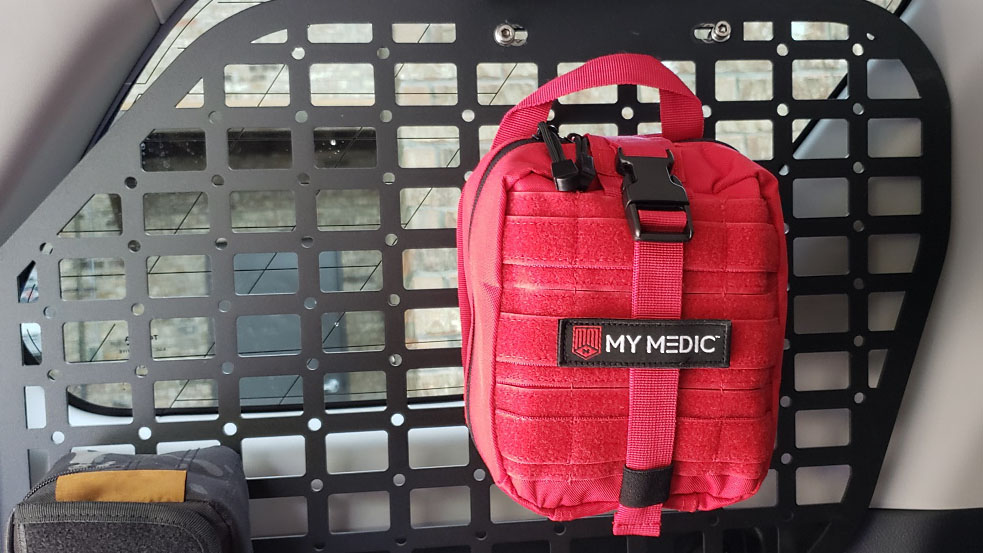
If you have a MOLLE storage panel on one or both of your rear windows, the straps on the rear of the tear-away panel can be threaded through the storage panel and snapped into place on the MyFAK. It took a little doing to get the MyFAK attached to the Rago panels that I used for the photos, but the resulting snug fit will keep the kit from needlessly bouncing around on and off road.
Unsnapping the quick release buckle and a firm tug will release the MyFAK from the tear-away panel.
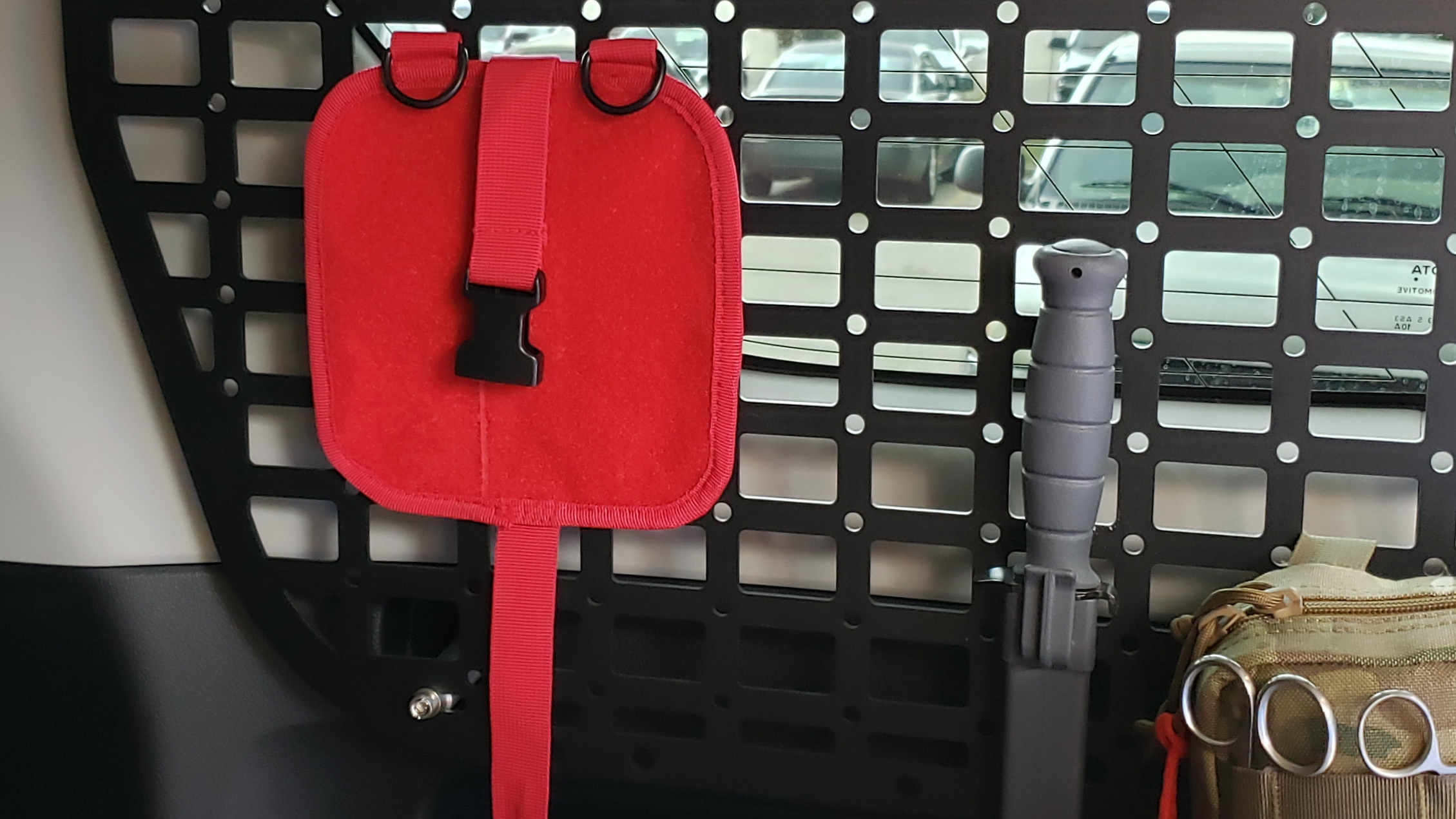
If you don’t have a MOLLE storage panel, there are a few other ways that you can store the MyFAK in your 4Runner.
The first aid kit drops right into the right, rear corner spot.
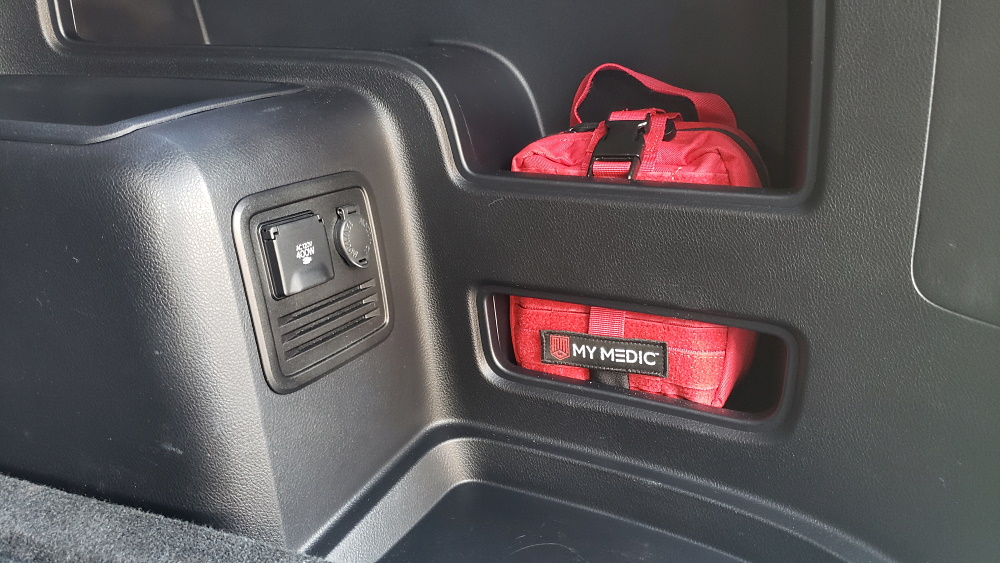
With the addition of two carabiners, the MyFAK can be attached to the backside of the front or rear headrests.
I used carabiners that are approximately 3 1/8 inches long, and have a 1/2 inch throat opening.
The opening size is important because if it is too small, the carabiners won’t fit around the posts of the headrests.
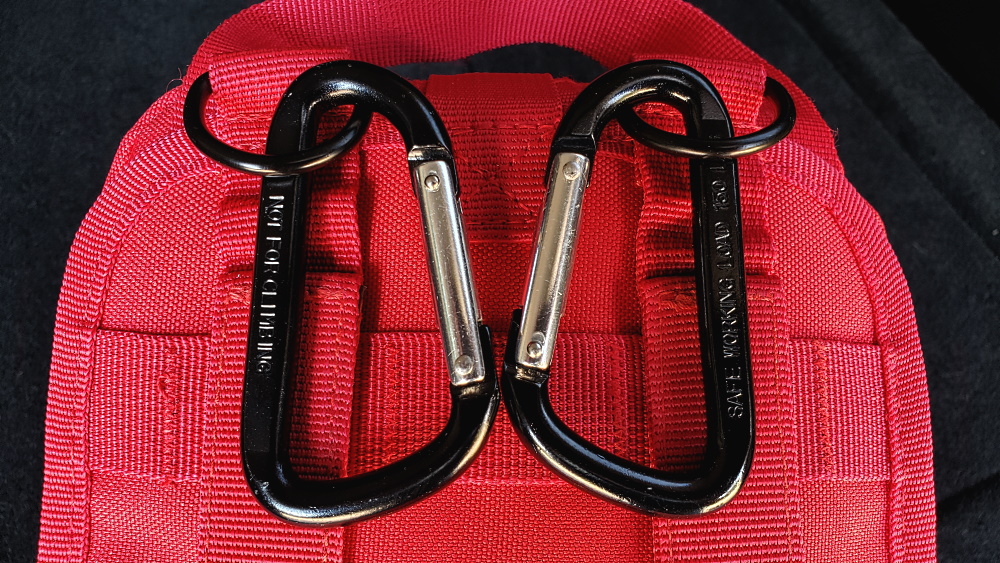
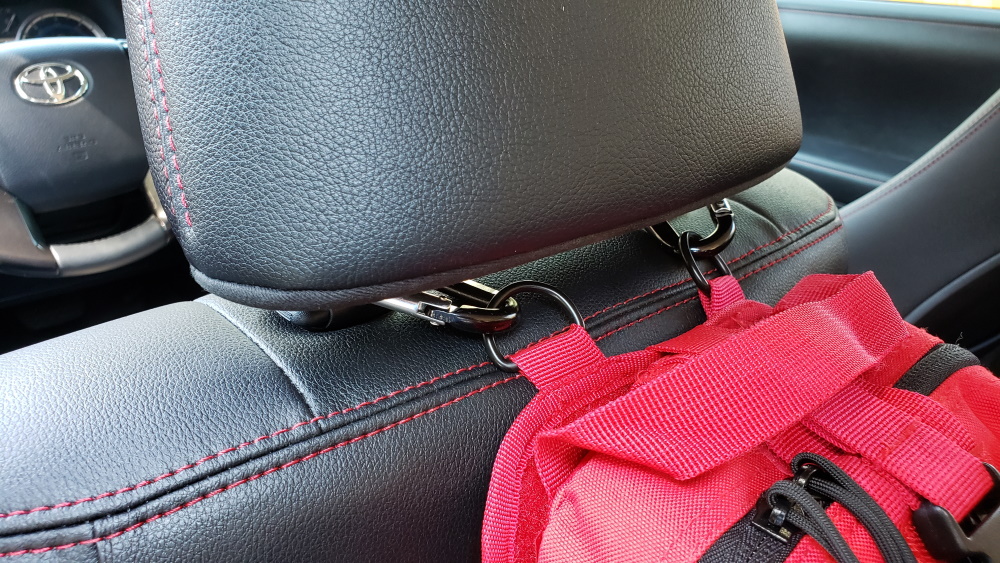

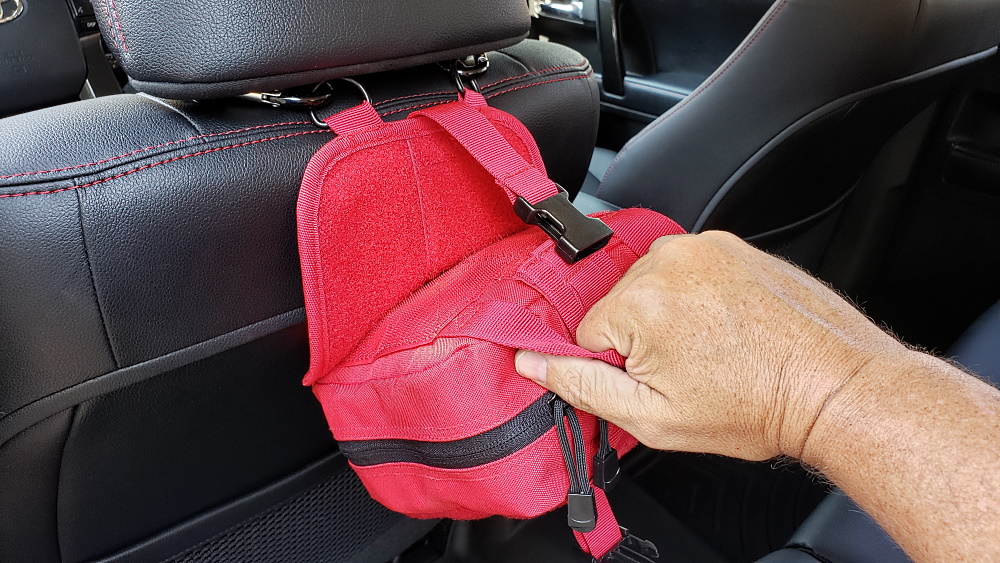
The same can be done using the rear headrests if you prefer to have the MyFAK a little more out of the way.
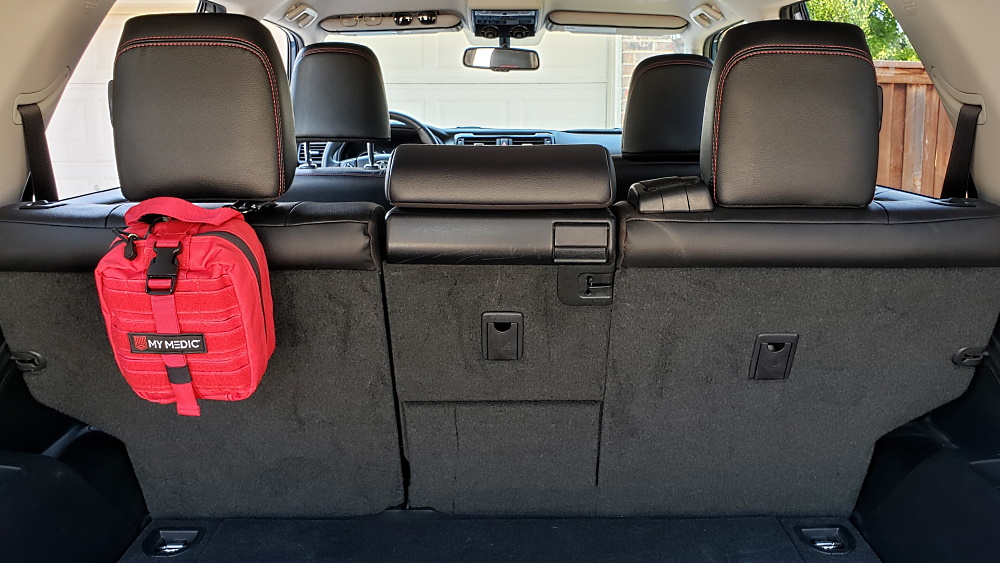
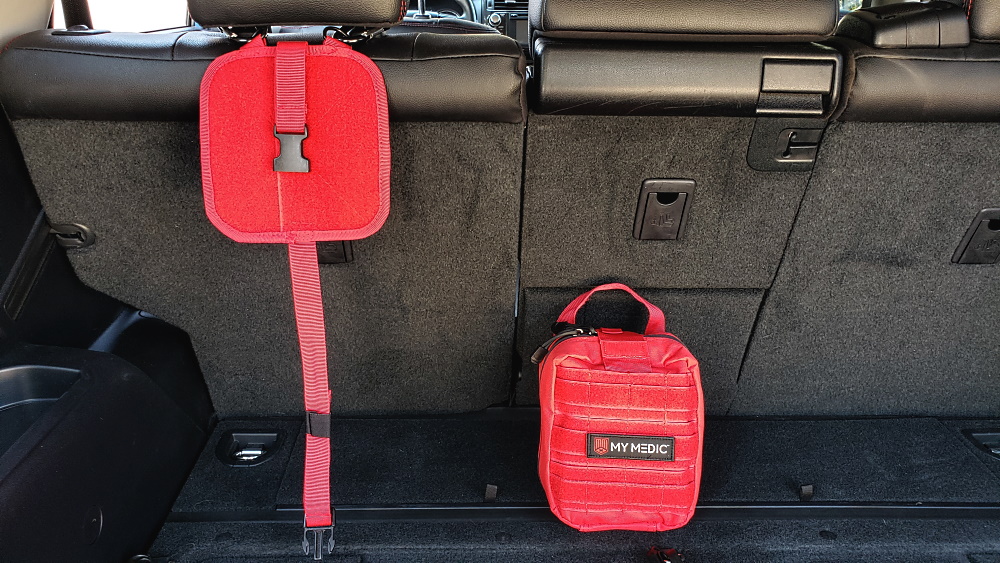
Since the back of the MyFAK is covered with hook side Velcro, you could also remove the tear-away panel, and “stick” the MyFAK to the carpet anywhere in the rear cargo area.
DIY FAK or MyMedic MyFAK – Comparison
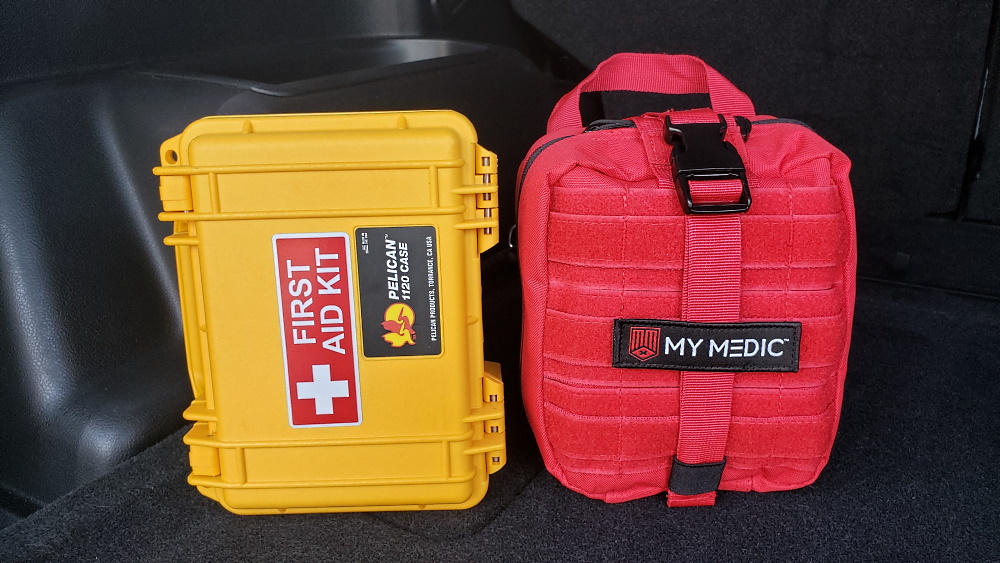
The dimensions of the MyFAK are very close to those of the Pelican 1120 case that I used for my DIY kit, which is 6.8 inches wide x 8.4 inches tall and 3.9 inches thick.
The ballistic nylon construction of the MyFAK makes it easy to “stuff” into a tight spot, and it doesn’t rattle as a hard case might. The fabric also makes the kit lighter.
The hard case of the DIY kit prevents the contents from being accidentally being crushed (I’ve seen videos of vehicles driving over Pelican cases). The Pelican case has an O-ring seal, which makes the case waterproof, whereas the ballistic nylon of the MyFAK is water-resistant. That said, MyMedic offers a first aid kit that is called The Boat Medic and comes in a waterproof, floating hard case.
Both kits fit nicely in the storage spot that is in the passenger side, rear corner of 5th gen 4Runners (provided that a subwoofer isn’t already occupying that area), but as mentioned previously, the MyFAK can be mounted on a MOLLE windows storage panel, or hung from the headrests of the front or rear seats.
My DIY first kit contains a few items that the MyFAK does not, and vice versa. If you purchase a MyFAK, I suggest adding some duct tape, a lighter or matches, a headlamp, and an Israeli Bandage.
SIDE NOTE: Big thanks to Benji A. for letting me use his 4Runner for photos of the MyFAK on Rago Fabrication Modular Storage Panels. In addition to owning a very nicely equipped 4Runner, Benji is the owner of Our Place restaurant. If you’re on the west side of Dallas-Fort Worth, and hungry for a great breakfast/brunch/lunch, swing by Our Place in Mansfield!

Just bought the Survivewear kit from Amazon. Under $65 shipped in Cyber Monday/Prime pricing. Thank you!!
How does this compare to the Surviveware Large First Aid Kit?
Maybe I missed it in both this and the DIY post, but what is the approximate cost for you to put the DIY one together?
Hey Don. Apologies for the delayed reply. I don’t have an exact cost for my DIY kit, as some of it came from items that I already had. Ballpark cost for everything in my kit, including the case, is ~$140.
Thanks for the comments and good discussion points, all.
I wholeheartedly agree with the need to be trained in the use of some of the advanced items mentioned in this first aid kit (as well as other basic first aid skills). I made sure to speak to this in my DIY FAK article, with regard to tourniqets.
The description for the MyFAK on the MyMedic.com site does include the following:
“…By ordering MyMedic First Aid Kits you warrant that you have the required training and authorization to use the medical supplies contained within…”
I really hope you’re not planning on using those suture kits on anyone.
Firstly, are you licensed to perform sutures? I.E. MD, RN, etc? Do you even have the slightest idea what you are doing?
Second, I know those forceps look cool in the molle weave so everyone can see them but they’re not even remotely sterile let alone sanitary in that state. If you ever actually use them, you’d better have antibiotics on hand and prepare for secondary infection considerations if you’re actually anywhere remote.
Next, have you ever packed a wound? Have you packed a wound with combat gauze before? Can you tell me the contraindications of using this product?
Lastly, along with what Dave said, there is a huge ethical dilemma in your recommendations here. You’re not qualified to recommend these products yet here you are. Trauma medicine isn’t a weekend hobby, and the misapplication of interventions and/or treatment progressions from an unqualified individual are not just dangerous, they can be deadly.
Doc, I appreciate your comments and I get where you’re coming from. On the flip side, I’m not reading this like the person whom did the review is claiming to be any sort of expert in the medical field, I’m reading this as simply suggestions or options like many of the other reviews on various topics. What I really like is that the article stimulates the discussion of being prepared on the trail. I think some people get so excited to wheel they forget that you need to be ready to expect the unexpected. It seems like you’re into this topic, is there something else you would recommend?
The best thing I would personally recommend is for people to become educated in medicine before considering even packing half of the stuff they do. Simple interventions often give the best results with minimal training; bleeding control, splinting, & shock prevention/treatment being the most prominent.
I get it, in today’s culture everyone wants to be an expert, especially with minimal effort. The shortest and least stressful route is the easiest choice. The perceived simplicity in ‘having the gear’ doesn’t make someone more capable in treating injury or preventing death. Some corners cannot be cut. OP is suggesting carrying some materials not intended for someone with even intermediate medical knowledge, which from an ethical standpoint can do more harm than good without proper training and expertise, and from a legal standpoint will get him sued or worse if he ever used it on anyone other than himself.
The main overstepping I take issue with here is the inclusion of intrusive interventions. Generally speaking, any treatment in which you have to put something into the body or through tissue is considered ‘intrusive’. The above mentioned items aren’t allowed for licensed EMTs to administer, and sutured aren’t even authorized for paramedics. Medications are tricky too: some people have allergies and reactions to even basic medications, so again those shouldn’t be given to anyone but yourself.
I agree with the inclusion of a bleeding prevention kit especially in today’s climate of shooting incidents, as well as basic first aid materials, but the rest should be mandatorily excluded.
The thing is…a lot of people buy these things with the mindset of an emergency where there will be longlasting absence of medical professionals. For instance, hunting in the Brooks Range in Alaska or driving in remote parts of northern canada. If you get a massive laceration and may not be found for a month, I’d think cleaning it up and stitching it up would be better for your health than Leaving it hanging open. Of course, I could be wrong. But i just wanted to clarify that not everyone is buying it with the idea they would use some of these things as a replacement for professional help.
Great read! If I could add a couple things, another super important yet pretty basic tool used by first responders is a tool to suction the airway; however, you don’t need a fancy vacuum or anything like that, a simple turkey baster will do. Tons of videos on youtube about the good ol’ turkey baster suction technique! Another piece of equipment
that wouldn’t be a bad idea is an occlusive dressing. They’re mainly used for penetrating injuries to the chest, they keep air from coming inside the chest cavity to prevent pneumothorax. Just my two cents awesome stuff though!
No….just no.
Turkey baster? God no.
Occlusive dressing? This is way over the head of a non qualified layman to even consider using. Misuse of an occlusive dressing can be fatal.
I have huge issues with this. First off they list the kit as being guaranteed for life. No fa kit is. Second you are listing first aide supplies you are not qualified to do so. Third you are suggesting this will save lives. You or the manufacturer is not qualified to do so. Let alone stop bleeding. Would you like me to go on?
Great article!
Thank you.
The overconfidence shown here regarding a skillset of which they have no knowledge or hands-on experience is frightening.